The Tomb of Amyntas, carved into the cliffs of Fethiye, Turkey, is a stunning relic of ancient Lycian civilization. Constructed around 350 BCE, this rock-cut tomb is not only a symbol of the region’s rich history but also a masterpiece of architectural ingenuity. Revered for its grandeur and significance, the Tomb of Amyntas offers a fascinating glimpse into the cultural and artistic achievements of the Lycians. Explore this mysterious ancient tomb with archeology.dulichvn.net
The History Behind the Tomb of Amyntas
The story of the Tomb of Amyntas is deeply rooted in the history of the Lycian civilization, which thrived in southwestern Anatolia.
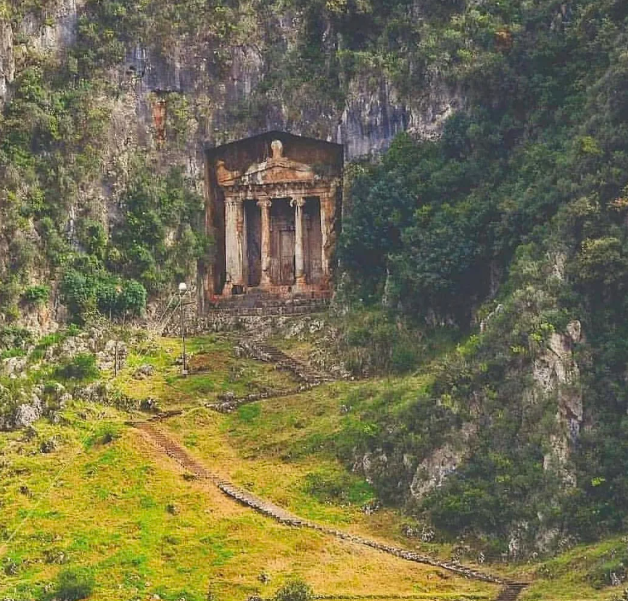
1. The Lycians and Their Heritage
The Lycians were an ancient Anatolian people known for their unique customs, political systems, and architectural feats. Fethiye, known in antiquity as Telmessos, was a prominent Lycian city, and the Tomb of Amyntas is one of its most iconic monuments.
2. Who Was Amyntas?
While little is known about Amyntas himself, inscriptions on the tomb suggest he was an influential figure, possibly a Lycian ruler or a high-ranking official. The tomb’s elaborate design and prime location reflect his importance and status.
See more: The Triumphant Stele of Amenhotep III: A Window into Ancient Egyptian Power
3. The Era of Construction
The tomb was built around 350 BCE, during a period when the Lycian culture was heavily influenced by Greek art and architecture. This influence is evident in the tomb’s design, which incorporates elements of classical Greek aesthetics.
Architectural Brilliance of the Tomb of Amyntas
The Tomb of Amyntas stands as a testament to the skill and creativity of Lycian craftsmen.
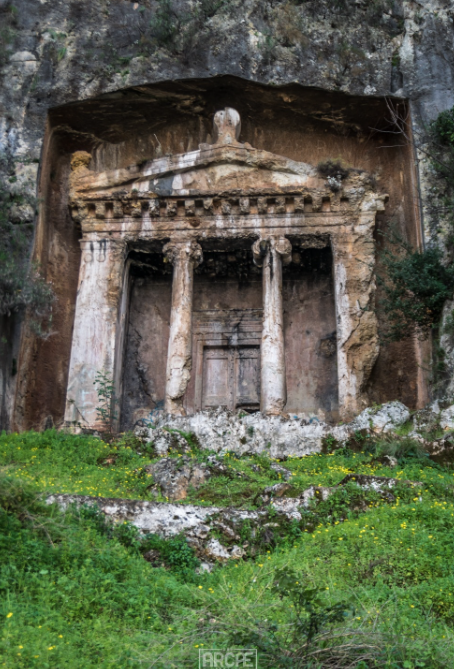
1. Rock-Cut Splendor
Carved directly into the cliffs overlooking modern-day Fethiye, the tomb showcases the Lycians’ ability to merge natural landscapes with monumental architecture. Its façade resembles a Greek temple, complete with ionic columns and an intricately detailed pediment.
2. Monumental Scale
The tomb’s size and prominence make it one of the most remarkable Lycian burial sites. Visitors climbing the steps to its entrance are struck by its commanding presence, a reflection of its builder’s social standing.
3. Artistic Detailing
Despite the passage of time, the tomb retains exquisite carvings and inscriptions that highlight the Lycians’ artistic talent. The combination of Greek and Lycian styles demonstrates the cultural fusion that characterized the region.
See more: The 2,000-Year-Old Roman Handprint in Cherchell
Cultural Significance of the Tomb of Amyntas
The Tomb of Amyntas is not merely an architectural marvel; it holds deep cultural and historical significance.
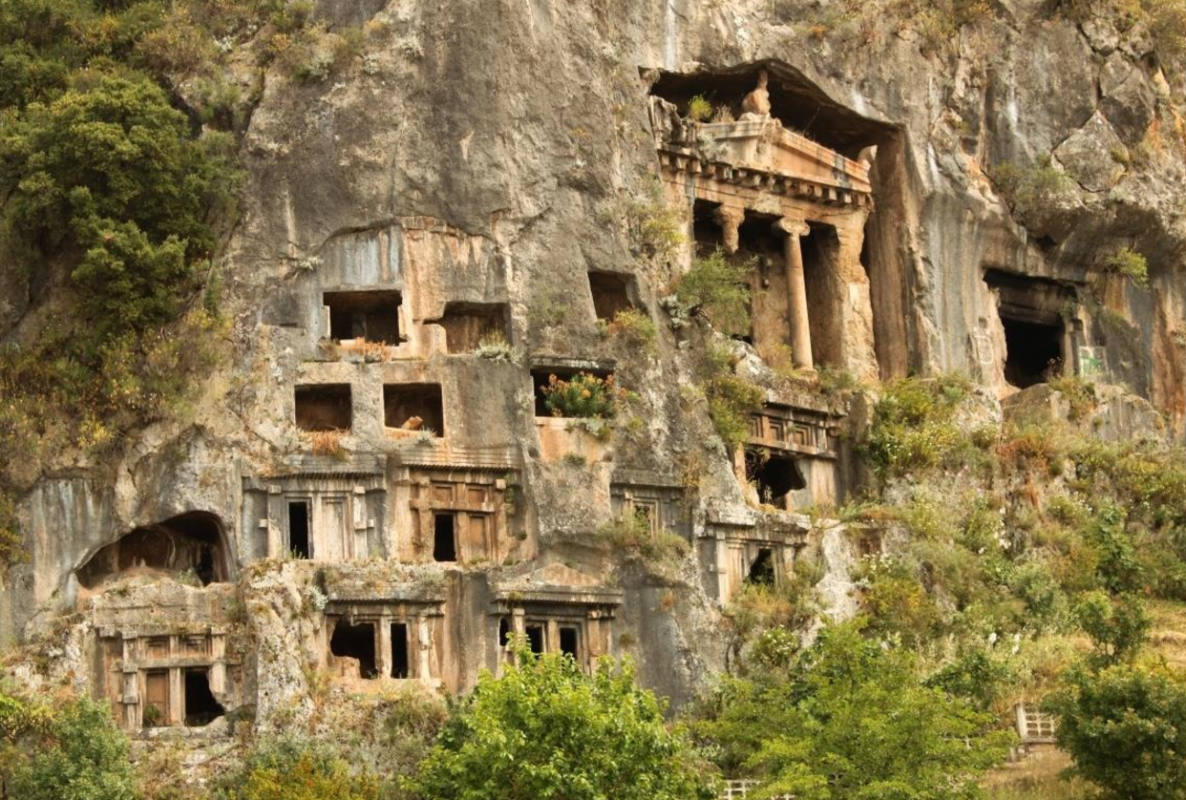
1. A Window into Lycian Society
The tomb provides valuable insights into Lycian beliefs about the afterlife, social hierarchy, and artistic traditions. Its grandeur suggests that Amyntas was a figure of great importance, likely revered by his contemporaries.
2. Connection to Greek Influence
The tomb’s Greek-inspired design reflects the close cultural and political ties between Lycia and ancient Greece. This influence is a hallmark of the Hellenistic period, during which Greek culture spread across the Mediterranean.
3. A Lasting Legacy
Today, the Tomb of Amyntas serves as a symbol of Fethiye’s historical heritage, attracting visitors from around the world who come to marvel at its beauty and learn about Lycian civilization.
Visiting the Tomb of Amyntas Today
The Tomb of Amyntas remains one of Turkey’s most popular historical attractions, offering breathtaking views and a sense of connection to the ancient world.
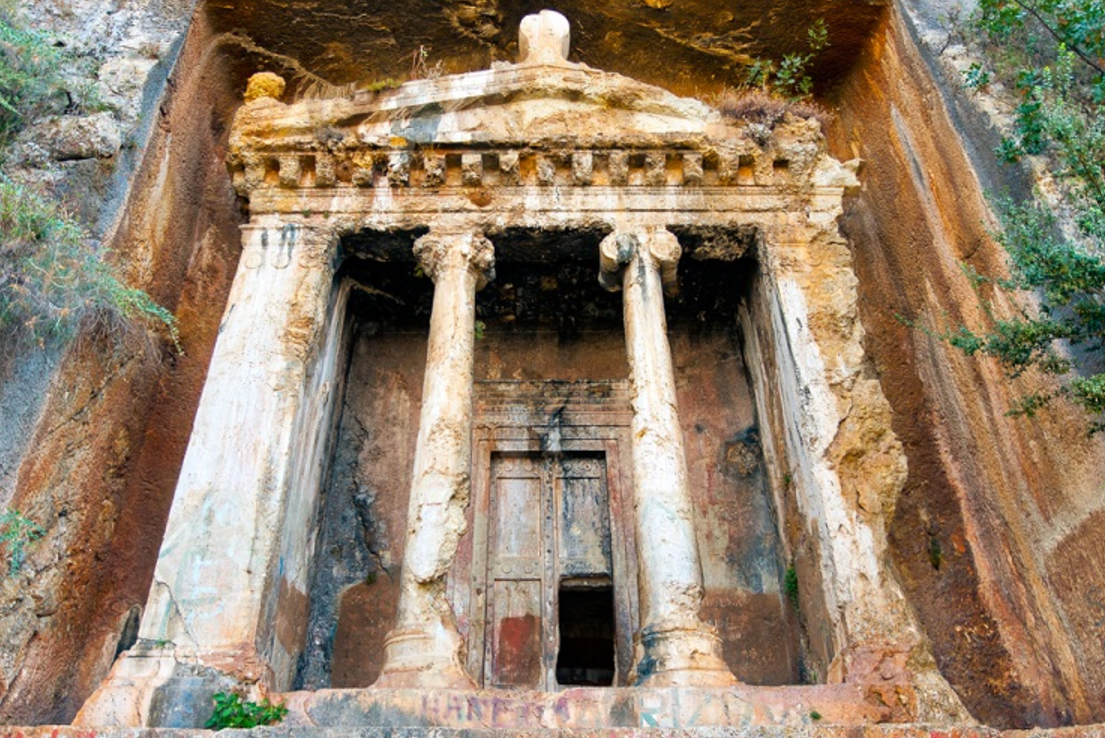
1. The Journey to the Tomb
Reaching the tomb requires a short but steep hike up the cliffs of Fethiye. The trail, surrounded by lush greenery, offers stunning vistas of the city and the Mediterranean Sea, making the climb worthwhile.
2. Experiencing History Up Close
Standing before the tomb, visitors can admire the precision and skill involved in its creation. The inscriptions and carvings evoke a sense of wonder, bringing the history of Amyntas and his people to life.
3. Practical Tips for Visitors
The best time to visit is during the early morning or late afternoon, when the sunlight enhances the tomb’s details and the weather is more comfortable for hiking. Wearing sturdy shoes and carrying water are essential for the climb.
Preserving the Tomb of Amyntas for Future Generations
1. Restoration Projects
Authorities have undertaken various initiatives to protect the tomb from natural erosion and human activity. These efforts aim to maintain its structural integrity while allowing visitors to experience its grandeur.
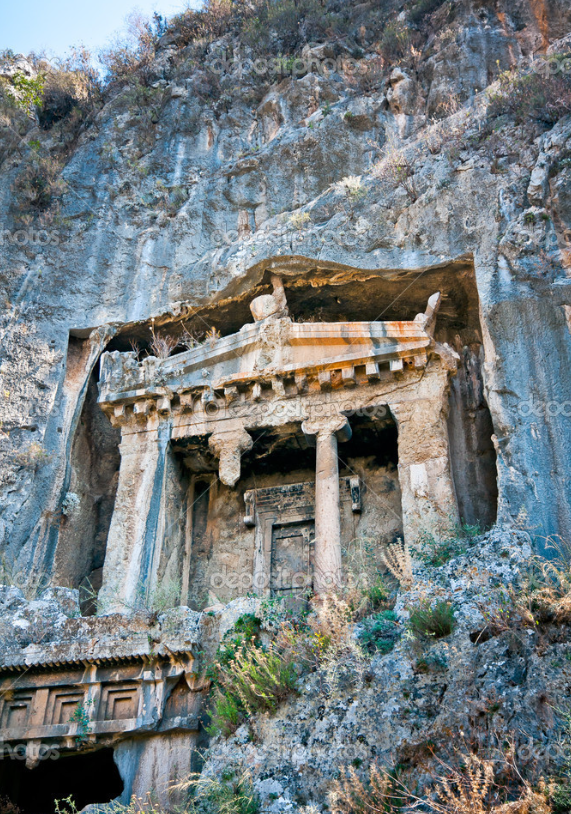
2. Raising Awareness
Educational programs and tourism campaigns emphasize the tomb’s historical significance, encouraging responsible tourism and fostering a deeper appreciation for Lycian culture.
3. A UNESCO Heritage Candidate
Given its cultural and architectural importance, the Tomb of Amyntas has been proposed as a potential UNESCO World Heritage Site, a designation that would enhance its global recognition and protection.
Conclusion
The Tomb of Amyntas in Fethiye, Turkey, is a shining example of Lycian ingenuity and their ability to create enduring monuments. Built in 350 BCE, this rock-cut masterpiece reflects the cultural and artistic achievements of its time, blending Lycian traditions with Greek influences. Today, it stands as a gateway to the past, inviting visitors to explore the history and heritage of ancient Lycia. The Tomb of Amyntas is more than just a historical site; it is a celebration of human creativity, resilience, and the enduring power of art and architecture.

CÁC TIN KHÁC
Mark Twain & Olivia Langdon: A 36-Year Love Story Filled with Laughter and Devotion
The Tollund Man: A 2,400-Year-Old Mystery Preserved in a Danish Bog
Skara Brae: Scotland’s Hidden Neolithic Village
Porta Nigra: The Hidden Depths of Trier’s Iconic Roman Gate